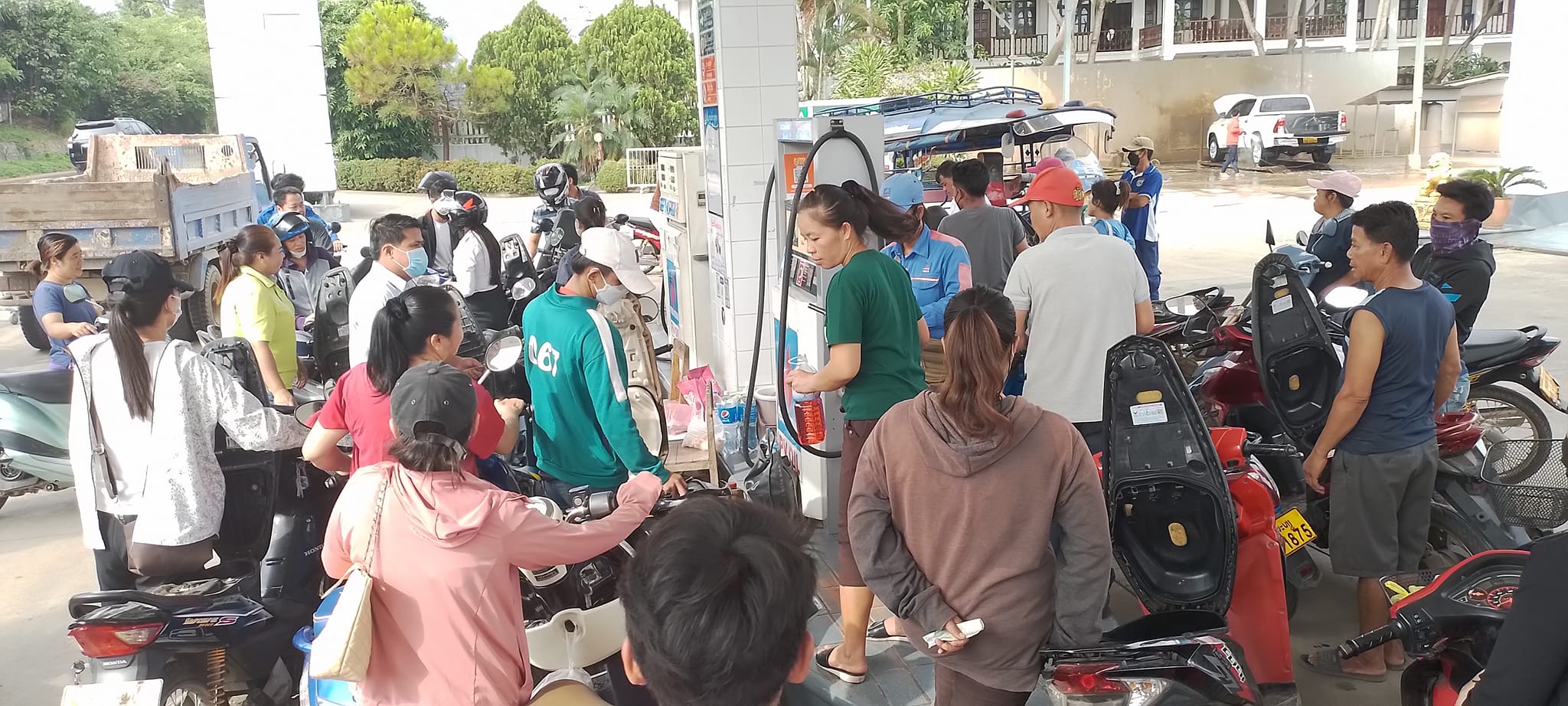Laos opened its borders to international tourists on 9 May. Laos has been closed since March 2020 when the pandemic hit.
With massive inflation over 2021-2022, Laos is suffering. Laos is looking forward to welcoming tourists and the support their spending brings to the local economy. Inflation in Laos increased to 9.9 percent year-on-year in April from 8.5 percent in March, mainly due to the higher prices of fuel, consumer goods and the continuing depreciation of the Lao kip.

Making things worse is a collision of global and internal factors causing a spike in fuel prices which has thrown Laos (and Sri Lanka) into chaos at the gas pumps. Gas prices have risen from 8,000 kip/litre in early 2020 to 23,000 kip in May 2022. Rising fuel prices forced transport operators to bump up their prices when the price of gas rose by 49.7% year-on-year in March 2022.
Motorists have been forced to queue for hours at petrol stations as a fuel crisis tightens its grip, the latest sign in a brewing economic crisis in the nation of 7 million. This comes against a backdrop of the economic impacts of the COVID-19 pandemic, which has drained the country’s foreign reserves over the past two years. Laos has $13.3 billion in sovereign debt, much of which has financed the construction of large-scale infrastructure projects including the $5.9 billion Laos-China Railway, which opened on 2 December 2021.
The government is concerned about how high prices are affecting Lao households, especially the poorest people. With borders now open we can only hope tourists are eager to visit this beautiful country and bring financial relief to so many people.
Tiger Trail operates 1-4 day city-style tours and also has a variety of programs that take tourists into more remote areas to bring much-needed income to these communities, through its FairTrek initiative.

